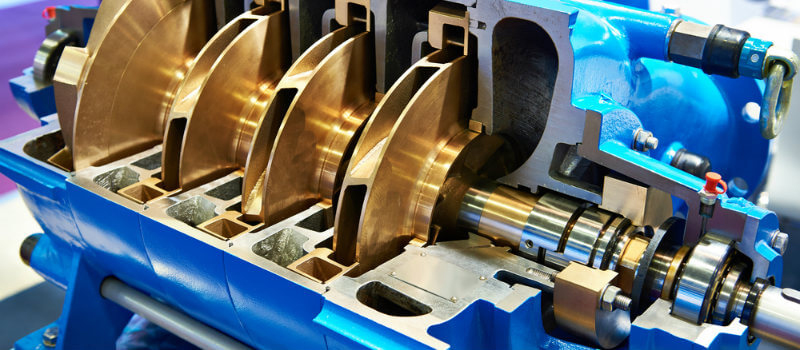primary consideration when purchasing the most suitable pump for an application
Understanding how to calculate discharge head on an industrial pump is not only crucial for effectively applying a pump to an application, but it is also a primary consideration when purchasing the most suitable pump for an application. Calculating discharge head forces you to know your application; fluid characteristics, inlet and discharge piping, and the pump’s performance requirements. Read the following article to learn how to calculate discharge head on an industrial pump.

This Article Includes
- Why is it so Important to “Accurately” Calculate Discharge Head on an Industrial Pump?
- What are the Factors for Calculating Discharge Head for an Industrial Pump?
Why is it Important to “Accurately” Calculate Discharge Head on an Industrial Pump?
Discharge head refers to the vertical distance a pump must push fluid in order for the fluid to reach the system’s highest point above the pump level. This is one of the factors that determine the size and power of your pump. Incorrect size and power can severely affect production and profit.
- Oversizing. An oversized pump delivers more flow than required. Even if other components are used to reduce flow or trim the impeller, excess energy that is not released in product flow has to be released elsewhere. Excessive heat, vibration, and “hammering” reduce pump life and efficiency.
- Undersizing. An undersized pump results in reduced flow rate and pressure. This may require the system to be augmented, or replacing the current pump with a larger pump, all of which raise operating costs. A decrease in energy causes the pump to require more power, and the effects can be similar to those produced by an oversized pump.
What are the Factors for Calculating Discharge Head for an Industrial Pump?
In order to calculate discharge head accurately, there are multiple aspects to consider. It’s more complex than just measuring the vertical height or static head. The dynamic head must also be factored in. This is the sum of head loss caused by components in the system itself.
Fluid Considerations
First, factor in the properties of the liquid being pumped.
- Flow rate. Determine what flow rate is required for your application.
- Viscosity. This refers to the internal friction of the fluid itself. Think of it as how thick and sticky the fluid is.
- Specific gravity. This refers to the weight or density of the pumped fluid by unit.
- Temperature. Since temperature affects the properties of the fluid and the discharge of energy, this also needs to be taken into consideration.
Inlet Piping
This is one of the elements that impact the dynamic head.
- Inlet pipe size. The size of the inlet pipe has a direct bearing on the suction “load” placed on the pump.
- Vertical distance. An important component is the height from the surface of the fluid to the centerline of the pump. In other words, is the pump level with, higher than, or lower than the fluid surface?
- Length. Pipes themselves have friction properties, so the amount of inlet pipe affects the overall loss of flow and pressure.
- Fittings. The type and quantity of fittings in a system also affect the dynamic head, so provide a list of types and quantities of the following when requesting a calculation:
– Elbows
– Tee Running
– Tee Branched
– Swing Check
– Globe Valve
– Butterfly Valve
Pressure Required at Discharge Point
The discharge side impacts the head differently than the inlet side so these factors are kept separate.
- Discharge pipe size. The discharge size in relation to the inlet size and pumping requirements is one of the most important considerations.
- Vertical distance. Similar to the inlet side, you’ll need to know the height from the centerline of the pump to the surface of the discharged fluid.
- Length. Pipe length and construction need to be factored into the computation.
- Fittings. Provide a list of types and quantities of the following when requesting a calculation:
– Elbows
– Tee Running
– Tee Branched
– Swing Check
– Globe Valve
– Butterfly Valve
Total Friction Head
A starting point for calculating the discharge head is to know the pressure required at the discharge point (psig). Then, a simple formula is used to convert this to feet:
psig x 2.31 = feet of head
This is just a starting point since many other parameters need to be considered in determining the final figure.
Total Elevation Head
Elevation head, also called static or potential head, is the potential energy of fluid given its height above a reference point. It can be the result of gravity or confinement or some other variable. The equation used to calculate it is:
elevation head = discharge height – pump height
Total Head Required at Discharge
With all your factors at hand, you can now calculate the total head now required at discharge.
total head = elevation head + friction loss + discharge pressure
Finally, to calculate discharge head correctly, the net positive suction head available (NPSHa) must be factored in. It must be greater than the net positive suction head required (NPSHr) in order to be efficient.
